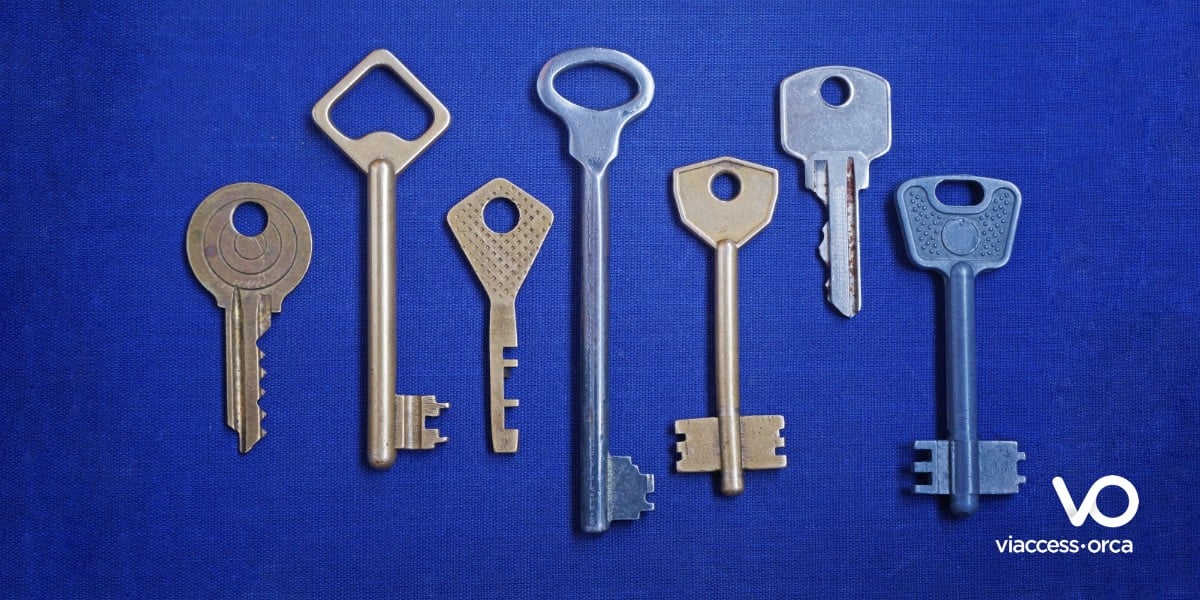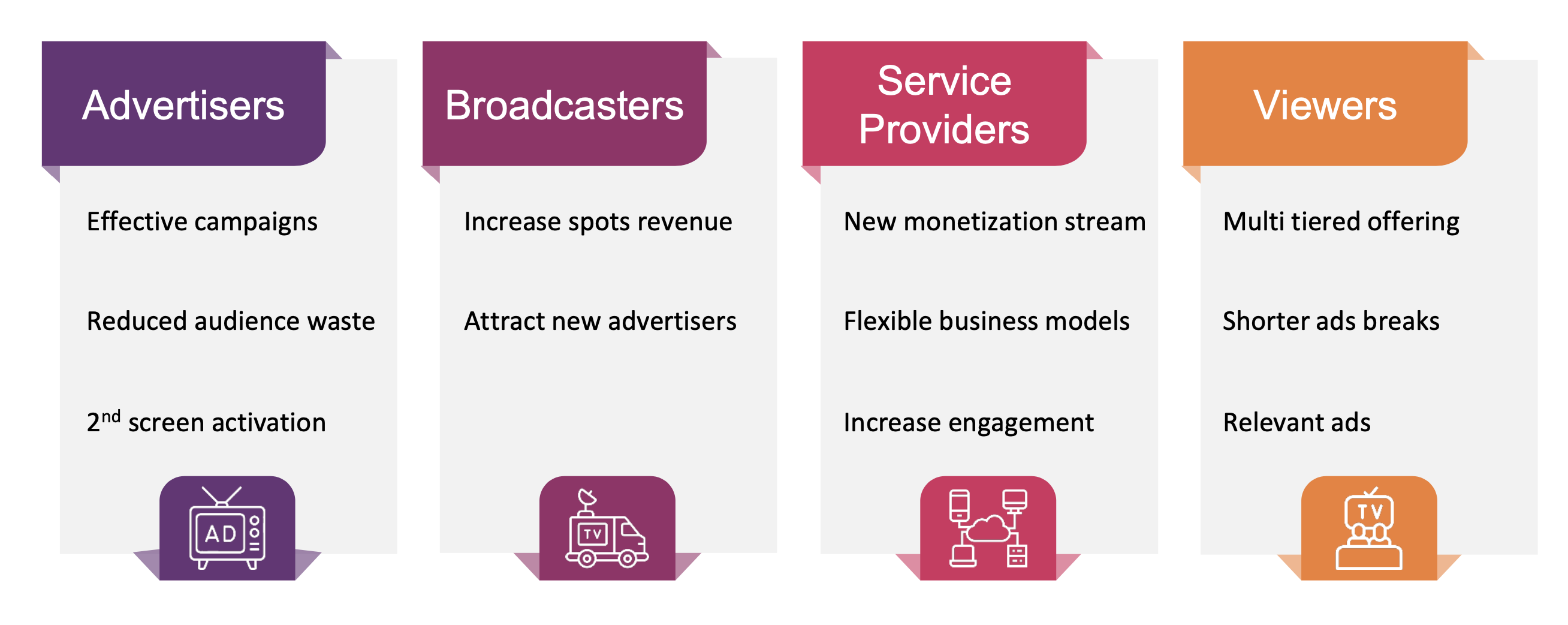The future of TV advertising is addressable. Find out how you can use these 7 keys to unlock the benefits of Targeted TV Advertising.
 Following the pandemic dip of 2020, TV ad spending has not only recovered but is still growing. What is more, the proportion of money being spent on Targeted TV Advertising campaigns as part of the greater whole is also growing all the time. As an example, according to figures from emarketer, overall post pandemic US TV ad spending is rising 17.7% to $93.33 billion over the period 2021 to 2025. Perhaps more significantly, all that growth is coming from Connected TV campaigns.
Following the pandemic dip of 2020, TV ad spending has not only recovered but is still growing. What is more, the proportion of money being spent on Targeted TV Advertising campaigns as part of the greater whole is also growing all the time. As an example, according to figures from emarketer, overall post pandemic US TV ad spending is rising 17.7% to $93.33 billion over the period 2021 to 2025. Perhaps more significantly, all that growth is coming from Connected TV campaigns.
The proportion of money spent on CTV will rise from 16.9% to 29.4% and reach $27.47bn in 2025. And that figure excludes network-sold inventory from addressable advertising, so the total figure will no doubt be higher.
Expand those figures out worldwide and the global potential is enormous. Targeted TV Advertising is one of those increasingly rare scenarios where everybody wins. I did a presentation on the subject at NAB, The pillars for a successful IPTV and OTT TV advertising business, and the slide we produced illustrates this well.

From advertisers to broadcasters, service providers, and viewers, Targeted Advertising brings benefits all throughout the chain. But to do that effectively it has to be set up in the right way. Here are seven key attributes you need to consider when it comes to launching your own targeted advertising solution.
The 7 keys to advertising success
1. Everything everywhere all at once
Fundamentally you need to be looking for a solution that enables you to support any type of ad display on any platform, any service, and on any screen. The television audience has fractured completely over the past decade and television advertising not only has to work with many different types of screen and device, but it also has to work with many different types of viewing mode. From live linear TV, to time-shifted viewing, to Video on Demand, viewers mic and match a range of different options to suit their mood and what they want to watch. Missing one out can mean missing out on revenue and opportunity.
You also want a solution that can support the complete range of advertising types that can de displayed in the modern broadcast ecosystem. Even if you do not immediately plan to use all of them, you want to be able to offer pre-roll, mid-roll, display banners, event driven banners, content overlays, and more.
2. Give viewers the choice
One strategy that has proved remarkably effective in the market is to offer viewers the chance to choose between different tiers of monthly cost and associated ad load. For example, a service can be offered at to following tiers:
- Free. Zero monthly cost supported by multi pre-roll and event based ads, with scheduled mid-roll
- Economy. Say $5 a month with a single pre-roll and event-based ads
- Premium. As an example a monthly cost of $9. No ads.
The free service acts as a funnel for customers, who then provide the audience for upselling the service. It is also possible to drop exclusive new content into the higher tiers before ahead of the free service, providing further incentives to upgrade.
3. Gain meaningful insights
One of the key consequences of legislation such as the EU’s GDPR is that the ad tech ecosystem has been forced to rely more heavily on first party data than before. This is effectively the information you have about your customers and how they use your services. How detailed this is depends very much on the information collected in the sign-up process, but it is important to realise that whatever you possess can be used to create further detailed segments via AI-based data analytics.
By analysing first party data such as viewing patterns and user profiles, a progressively more granular picture can be build up of household composition and demographics, including life events such as the arrival of a new baby or a potential retirement.
4. Engage!
Data is just numbers until it is use properly, and you want to make sure you have access to the tools that will help you take all this AI-based insight into you audience and use it to boost engagement and grow stickiness with fully optimised and personalised user experiences.
Greater understanding of your audience has twin benefits. From an advertising point of view, optimised audience segmentation leads to more effective advertising and premium ad-tech rates. From an end-user perspective, increased engagement leads to extended viewing time and additional advertising market opportunities. With lead to revenue growth.
5. Don’t limit yourself to a single demand source
One of the big trends in the way that ad-tech is evolving is that the large players are looking to establish walled garden approaches that try to lock service providers into their own end-to-end ecosystem. While there are potentially some short-term revenue gains that can be realised from this, in the long-term it dramatically limits your room for manoeuvre in what is a dynamically changing system and potentially minimises your revenue potential. The best way of maximising your CPM is by combining competing ad sources, making sure you get the best price for your inventory at all times.
6. Mind the gap
TV 2 Digital is a new framework that is just starting to be deployed in the digital advertising arena by companies such as AT&T that unites the TV world with digital platforms to provide a holistic campaign that stretches across them. More than that it also allows brands to produce sequenced campaigns that target customers with new messaging as they progress along the customer journey.
For example, say in Week 1 a viewer watches an ad on a TV screen. We know they have watched the ad, so on week 2 we can serve a follow up ad to them, also on the big screen. Then, in week 3 we implement second screen activation, and follow the first two ads with a new one that appears while viewing on their smartphone.
7. Stay lean and scalable
Lastly, there are a group of features you want to look for that will help you manage a lean fit, and scalable operation that will serve you both now and into the future. They include:
- A Unified Platform - Serve and manage all your platforms and devices via a single, unified solution
- Success-Based Model - Adopt partners to empower end to end delivery, align your goals, and KPIs
- Hybrid mode - Combine the benefits of CSAI and SSAI for maximum monetization and audience reach
- TV-centric Technology - Ensure there are no compromises on delivery quality and user experience
7 keys, 1 action
The time to get involved in targeted TV Advertising is very much now. Technological development in the video industry as a whole is accelerating rapidly, and the ad tech technology stack is perhaps evolving even faster. Both also have to cope with dynamically changing consumer demand, which leads to not one but several sets of shifting goalposts.
Keeping these 7 keys to success in mind though will help ensure that you are not just getting ahead of the curve, you are hitting it at just the right moment with just the right tech stack. Wait too much longer, and the chances are high that the opportunity will start to diminish at the same time as the expense of playing catch up starts to increase.

